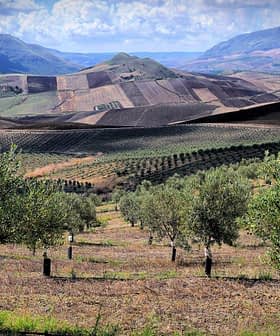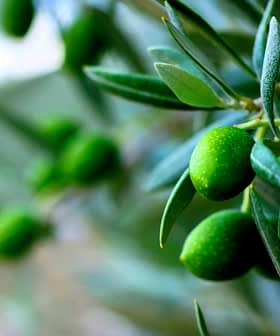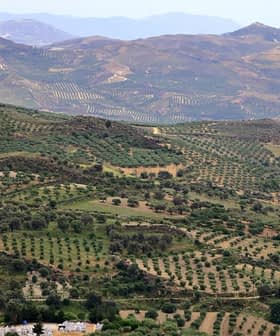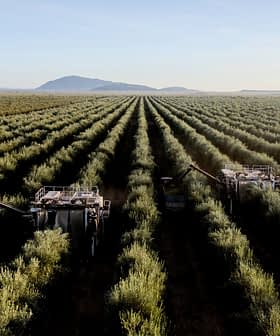Turkish Producers Set for Bumper Harvest

Olive oil producers in Turkey are anticipating a record-breaking harvest of 475,000 tons in the 2024/25 crop year, surpassing the previous record of 421,000 tons. Despite concerns about prolonged dry weather affecting the sector, the United States Department of Agriculture confirms that Turkey’s olive oil producers are on track for a bumper yield, with prices expected to be shaped by factors such as quality and production costs.
Olive oil producers in Turkey anticipate a record-breaking harvest in the 2024/25 crop year.
According to the official harvest estimate released by the Turkish National Olive and Olive Oil Council (UZZK), the season’s olive oil production will exceed the 421,000 metric tons produced in 2022/23.
“An olive oil harvest of 475,000 tons is estimated,” UZZK president Mustafa Tan said. “This also surpasses the record of 421,000 tons two years ago in 2022/23.”
See Also:2024 Harvest Updates“Our country is making a great breakthrough in olive cultivation,” he added. “In 2022/23, it ranked second in the world after Spain. There was a drought in Spain in those years. Our country was more fortunate, but this year, our country showed that it was not a coincidence. In this sense, we are very happy.”
Should the official production estimate come to fruition, and with other significant Mediterranean producers such as Italy and Greece expecting low to moderate yields, Turkey is also likely to reposition itself as the second-largest olive oil producer in the world behind Spain.
However, despite the predicted record crop, Tan noted that the prolonged dry weather prevailing in the county has cast doubt on the Turkish olive oil sector.
“While we should have been very happy this year, unfortunately, there is great pessimism in the sector because rainfall has never been this late,” he said. “Every day [the producers] wait, they worry whether the olives will disappear or go back.”
The United States Department of Agriculture (USDA) office in Turkey’s capital, Ankara, confirmed that the country’s olive oil producers are on track for a bumper yield, albeit mostly those with irrigated olive groves.
“Production and export expectations are quite high,” the office’s agriculturist specialist, Kubilay Karabina, told Olive Oil Times. “However, due to the dry summer months, it is said that small producers, especially those who do not have irrigation facilities, will encounter a yield below expectations.”
Karabina added that the prices of the season’s olive oils will be shaped mainly by factors such as the quality of the fresh oils and the production costs in Turkey.
“Depending on the quality, prices are expected to soften in dollar terms after harvest,” he said. “However, high labor costs will prevent a downward shift in prices. As of now, no problems that would negatively affect total quality have been reported to us.”
Producers across Turkey are also anticipating a bountiful crop in the year ahead. However, some expect the national olive oil yield to be lower than the record harvest estimate from UZZK.
“We expect a significantly better olive oil harvest this year compared to the previous season,” said Can Candeger, a manager partner at Artem Oliva from Izmir, one of Turkey’s largest olive oil producers and exporters.
“While harvest has started slowly in the southeast, the full harvest will commence in early November,” he added. “Our initial estimates suggest a potential increase of around 40 percent in yield compared to last year, with an expected total of about 300,000 tons across Turkey.”
In the previous 2023/24 crop year, squeezed between the 2022/23 harvest and the record-forecasted 2024/25 harvest, Turkey followed the trend of reduced yields across the Mediterranean basin with an overall production of about 200,000 tons.
See Also:Turkish Producers Achieve Exceptional Results with Native Olive VarietiesCandeger also noted that, due to the favorable growing conditions and the absence of olive pests in most producing regions, the quality of the season’s fresh olive oils is expected to improve considerably this year compared to the previous one.
Ayvalik, a significant olive oil-producing region on Turkey’s northwestern Aegean coast and home to two million olive trees, is expected to produce a bountiful olive oil crop this season. However, the absence of rainfall in the area has become a critical factor in determining the final yields.
“The quantity of olive oil will substantially increase this year,” said Mustafa Kürlek of Köklü Zeytincilik, an olive oil and table olive producer in the region’s Kaz Mountains.
“But the rains have not yet come,” he added. “As a result, the olives are substantially wrinkled now. Should the rains not fall, there will be a significant decrease in edible olives, resulting in more olives being channeled to olive oil production. In the end, more olive oil will be available on the market.”
Kürlek also determined that Turkey’s national olive oil production in 2024/25 will likely double compared to the previous year and total around 400,000 tons.
Across Turkey, the pattern of this year’s expected olive oil yield varies from region to region due to the lingering drought in much of the country.
A bountiful harvest is expected in some producing regions, including the southern province of Kilis, where production is expected to increase to 10,000 tons of olive oil from 6,000 tons last year.
However, some other areas, such as the Edremit Gulf in the northwest, are facing a smaller crop than initially expected due to insufficient autumn rain.
Meanwhile, the record production expected in Turkey in 2024/25 has also sparked ambitions for record olive oil exports from the country this year, particularly after the export ban on Turkish bulk olive oil exports has been completely lifted.
“The historical yield obliges us to break historical records in exports,” said Mehmet Emre Uygun, the chairman of the Aegean Olive and Olive Oil Exporters’ Association (EZZIB).
Uygun added that the association’s target for the 2024/25 season is to increase Turkish olive exports to 200,000 tons. According to EZZIB, Turkish olive oil exports amounted to 65,000 tons in the previous 2023/24 year.
“In the next five-year term, we will day and night ramp up our annual exports to $1.5 billion (€1.39 billion),” he said.









